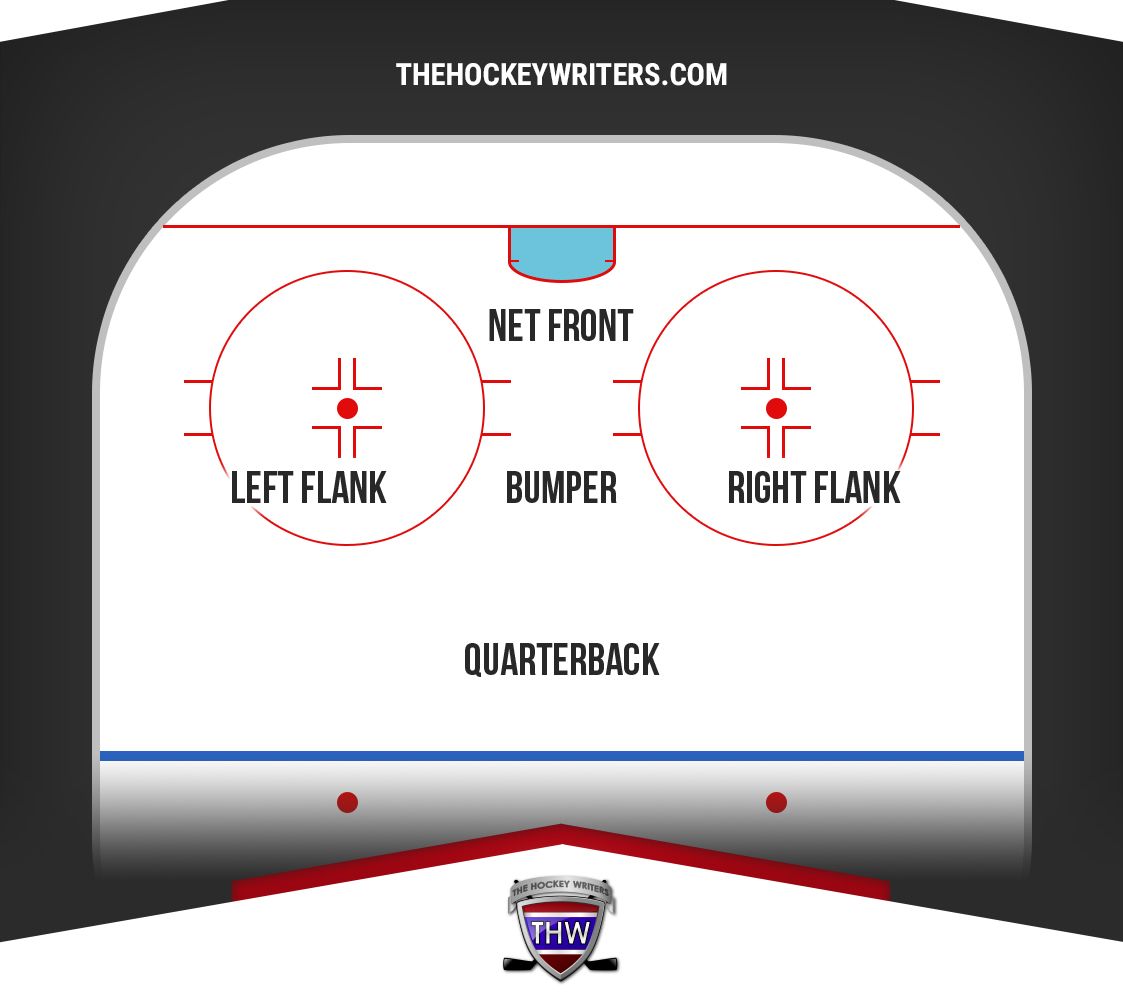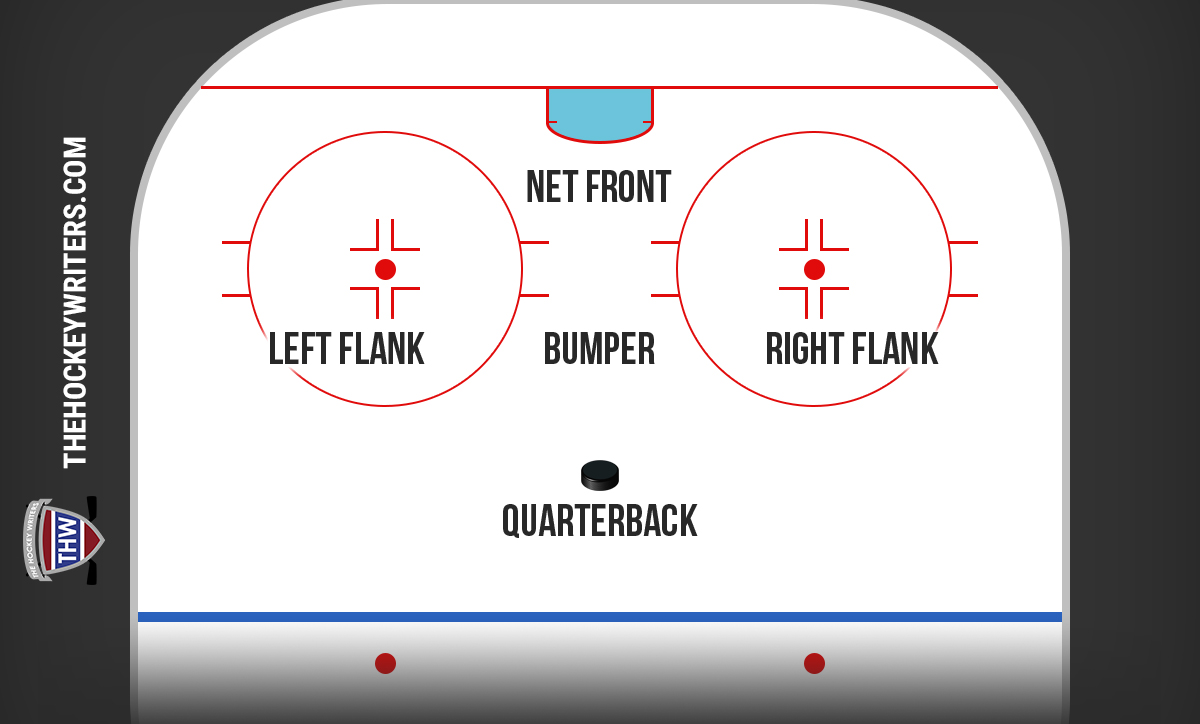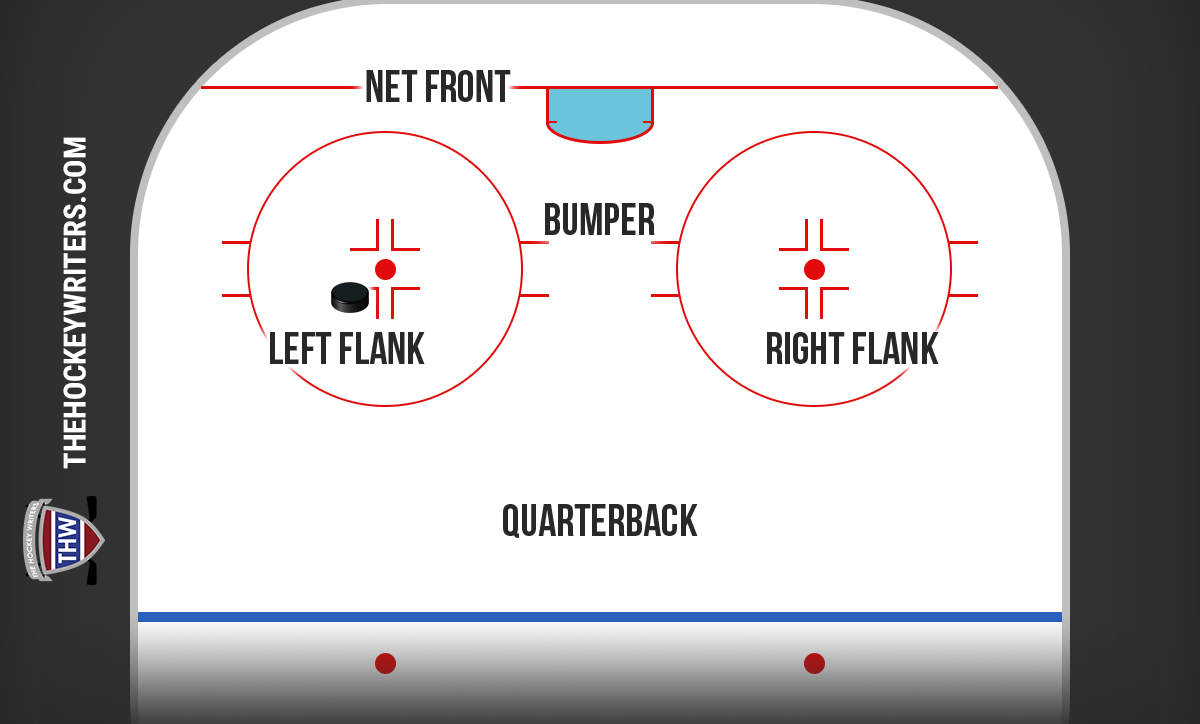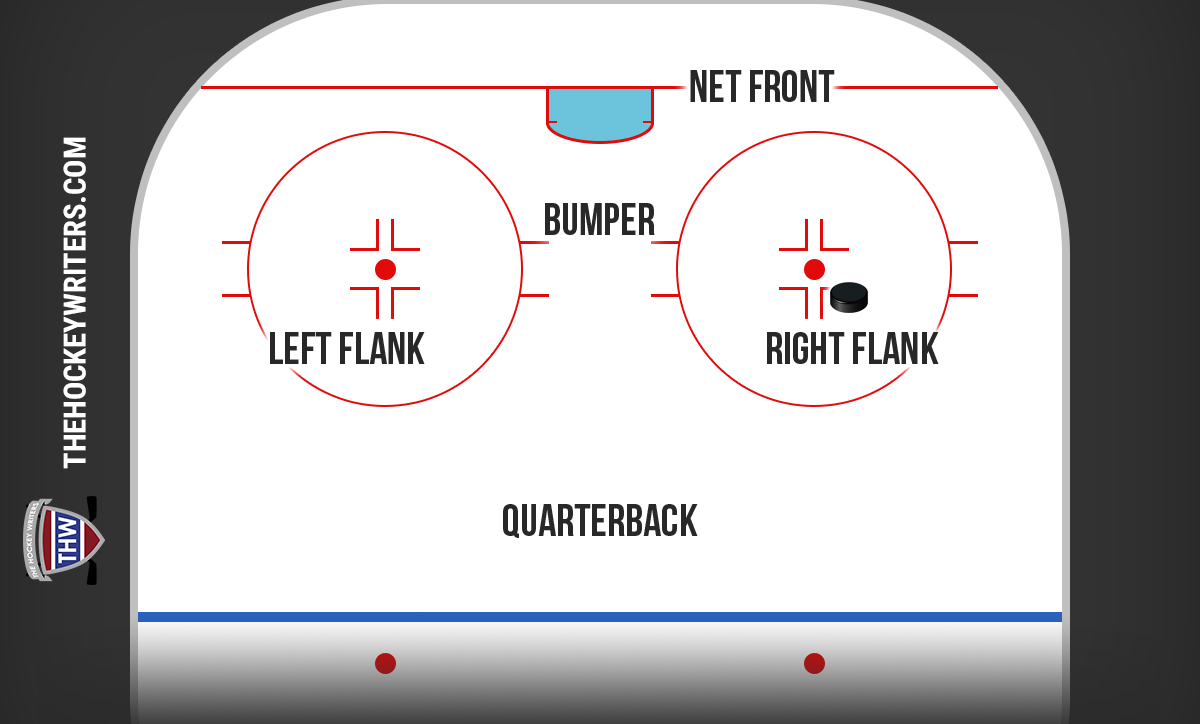Derek Lalonde and his coaching staff have implemented several new strategies since joining the Detroit Red Wings. One of which is their approach to the power play.
After only converting on 16.3 percent of their chances last season, Detroit’s new-and-improved power play has scored at a 23.8 percent clip through five games.
But what makes this year’s power play special? Let’s dig in and find out.
Detroit’s 1-3-1 Power Play
Up first is a quick overview of how the Red Wings operate with the man advantage. They run a 1-3-1 power play, which employs the five positions/roles:
- Quarterback
- Left Flank
- Right Flank
- Bumper
- Net Front
Here’s how the five players line up:

In this setup, the quarterback, left flank, and right flank mostly control the puck. The three roam around their designated areas and pass the puck frequently to create open shot lanes or passing lanes to the bumper and net front. And if the puck carrier is under duress, the bumper moves closer in a supporting role to receive a short pass and quickly move it elsewhere.
Latest News & Highlights
This is similar to the power play that the Red Wings ran under Jeff Blashill. There are a few key differences, though. For more on that, let’s look a little closer at how the five players move around the offensive zone.
Red Wings Power Play: Player & Puck Movement
To start, let’s look at the base setup of the 1-3-1 power play – players in position and the quarterback possessing the puck up top:

More often than not, Detroit’s quarterback slides the puck over to the left flank. This is where David Perron and Lucas Raymond come into play. On their off hand, they have the ability to one-time shots on net or one-touch passes to the right flank or bumper.
Speaking of the bumper, he’s on the move. This is one of the new wrinkles Detroit’s coaches have added to the power play this year. The net front player slides over to the side of the net and the bumper moves closer to a crease, as shown below:

With these two players in motion, the defense must pay attention to where they are going, which draws attention away from the puck. The movement also temporarily obstructs the goalie’s sight lines – Perron’s power play goal against the Los Angeles Kings was a prime example of this:
Notice how Oskar Sundqvist glides past Jonathan Quick, taking his eyes off the puck for a split second. That’s all the time that Perron needed to rifle a shot over Quick’s shoulder.
Now, it should be noted that Sundqvist isn’t there solely to screen the goalie. In fact, the adjusted alignment opens up playmaking opportunities for the net front player. Once he receives the puck at the side of the net, he can either drive the net, one-touch a pass to the bumper for a shot, or slide the puck across the crease to the right flank sneaking in. The latter of which—Dominik Kubalik’s goal against the Anaheim Ducks—is shown below:
Additionally, the bumper can receive a pass from down low and one-touch it over to the right flank – a little misdirection to confuse the defense.
Finally, let’s flip things around and give the puck to the right flank. The bumper and net front adjust their positioning in this scenario, too:

I should note that this movement seems to happen only when the right flank possesses the puck for an extended amount of time. I’ve also seen a variation where the bumper—usually left handed—slides down next to the net, while the net front backs up a little into the slot. It hasn’t happened often, and appears to be related to the handedness of the players on the ice.
Overall, the strategy here is to have four open passing lanes, regardless of where the puck is and who has it. Between that and having an active, involved bumper, Detroit’s power play looks much better than it was last season.
Final Word
It’s great to see Detroit’s new-and-improved power play clicking early in the season. New systems typically take time to absorb – the power play seems to have missed that memo.
Next: Red Wings Would Be Crazy to Trade Dylan Larkin
For the Red Wings to have a successful season, they need this trend to continue. A functional power play will go a long way in helping Detroit compete for a playoff berth this year.

